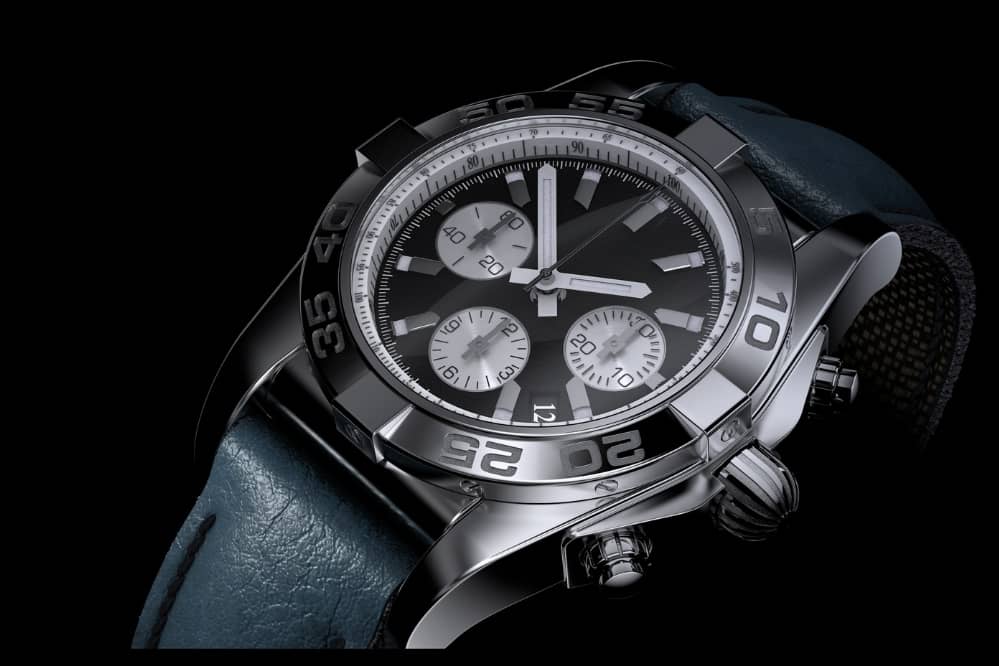Watches, like all forms of jewelry, are investments. The best timepieces are of their time and timeless, and yet, the second they’re seriously scratched or smashed, time stops — as does your heart. There is no worse feeling as a watch owner than seeing something that cost hundreds, thousands, or even tens of thousands of dollars become damaged, to say nothing of their truly priceless emotional resonance.
Thankfully, watch restoration efforts can help save your watch from becoming a glorified piece of scrap and restore it back to its former glory.
How Does a Watch Dial Get Damaged?
There are any number of ways in which your watch dial may become damaged, including:
Improper Watch Storage
Your watch should ideally be kept in a cool, climate-controlled area. Extreme cold or heat can result in damage to the gaskets and impair their overall movement and performance. This is especially true when water vapor enters the dial. Heat especially can cause the lubricant that helps the gears move smoothly to congeal, causing friction between gears.
Cross Threading
If you don’t thread the watch properly, it can cause it to become misaligned. This in turn can lead to the crown jamming.
Underwater Usage
If a little water vapor can be damaging, submerging your watch in water could be deadly for the dial if it isn’t waterproof. This can also cause the area around the dial, the band, and other metal parts to rust.
Blunt Force Trauma
Study as the best watch models are, they aren’t indestructible. One of the simplest yet most potentially devastating ways to damage the dial of your watch is to smash it against something. Even if it’s just a “small tap” as opposed to a “big whap,” a direct hit against a hard surface such as cement or granite can smash and crush the dial.
Can a Watch Dial Be Restored?
The answer to this really depends on the nature and extent of the damage to the dial. If the watch has been smashed to pieces to the extent that there is crystal everywhere or the numbers and hands have fallen off completely, it’s probably safe to say that the watch is too far gone.
In addition, restoration work can run into problems of impossibility if it involves extensive cleaning. Dials often make use of lacquer that, over time, can start to turn yellow or else crack. This in turn can cause oxidation. As a result, the yellowing cannot be cleaned without likewise removing some or all of the lacquer, which can naturally have a detrimental effect on your watch’s appearance and value.
On the other hand, if the watch has “only” been subjected to rust, friction, or minor to moderate damage as described above, there is a fair chance that it could be repairable by a trained expert.
The Cost of Restoration Work
Calculating any watch dial restoration cost on your part will likewise involve taking into consideration those aforementioned contextualizing facts.
For example, if you are looking to restore the finishing on a dial after it has been tarnished, the cost can run to anywhere from $70 for a cheaper watch to $120 or more for a fancier watch. More extensive refinishing services tend to start around $200. Two-tone dials, luxury watches, and chronographs tend to be among the most expensive types of watch dials to fix.
Of course, these prices are just estimates, and only account for the actual materials and most basic estimate of repair costs. There are plenty of other things that can be tacked onto the cost of watch dial restoration, which can make it even more expensive.
For example, these costs don’t factor in the expertise of the repairer. A more experienced watch restorer can afford to charge more given the prestige factor of their name. What’s more, if the damage to your watch is particularly difficult to fix, you may need to pay for specialized services, which are bound to cost even more.
There is also the question of the “quality” of the materials used. If you have damaged crystal or sapphire features, that is bound to be more expensive to fix than more mundane materials.
In Conclusion
For all of the reasons mentioned above, it’s important to see watch dial restoration less as a “go-to” option and more of a last resort. While minor repairs and restoration work can be pretty cheap, more extensive efforts can easily cost several hundred dollars. Do you really want to spend that much to get rid of a tiny scratch?
What’s more, restoration efforts can be damaging to a watch’s lacquer and thus affect its appearance. If your watch has sustained significant damage, it may be repairable with restoration efforts. That said, if the damage is too minor or too extensive, these efforts may be too expensive or else simply not worth the difficulty and potential damage they can do to your watch’s lacquer.
